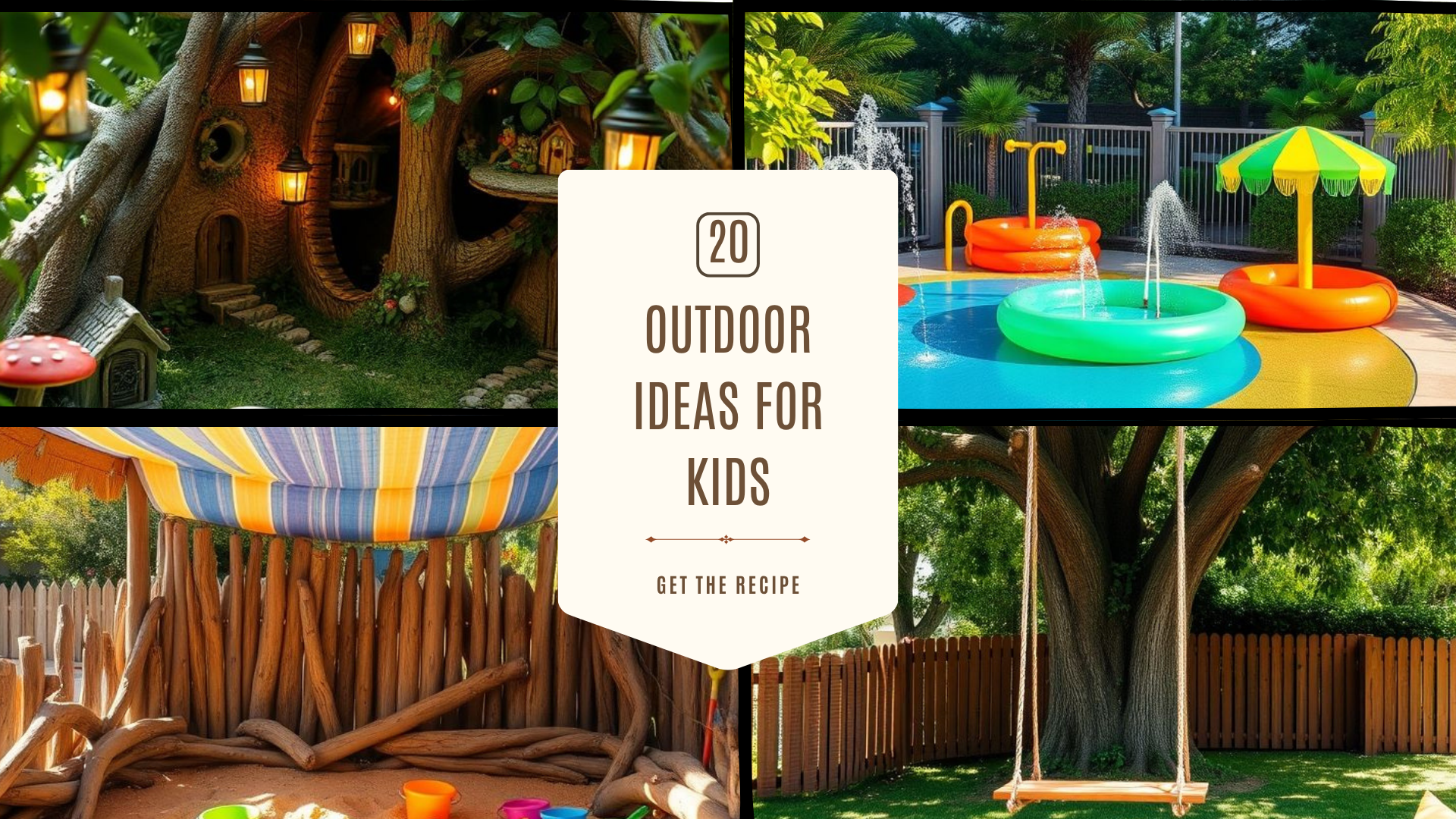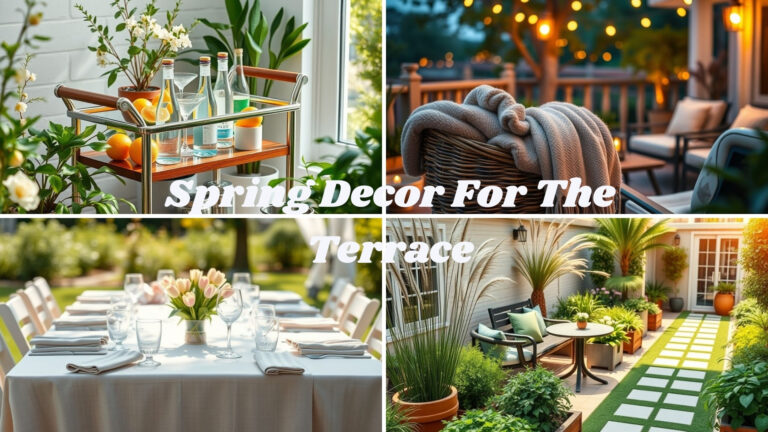Outdoor Ideas for Kids: 20 Backyard Play Zones & DIY Fun
Outdoor Ideas for Kids: 20 Backyard Play Zones & DIY Fun
Designing a child-friendly yard isn’t about buying the biggest swing set—it’s about layering small, thoughtful zones that spark imagination, movement, and calm. The ideas below turn everyday materials into mini adventures, encouraging kids to read, build, climb, create music, experiment with water, and tend tiny gardens.
Each section describes how the space looks, what kids do there, how it supports learning and sensory development, and quick tips to build it safely. Mix several zones together, or rotate features seasonally to keep your outdoor play world feeling fresh.
Backyard Storytime Circle With Logs and Canopy
A ring of low log stools forms a natural amphitheater sized for small readers and big imaginations. Overhead, a light canvas canopy softens sun and frames the space as “special.” Kids gather for read-alouds, puppet shows, quiet drawing, or sharing their own stories. The circle ritual builds turn-taking, listening skills, and confidence.
Scatter floor cushions and a woven rug to make it cozy and accessible for different sitting preferences. A small crate becomes the “librarian’s box” for rotating books. Add a stump podium so children can lead the session. A bell or chime signals “circle time” and helps transitions without shouting.
Position the circle near shade and away from high-energy play to protect focus. Use sanded, sealed logs with stable bases to prevent tipping. String warm lights under the canopy for dusky storytelling in summer. In rainy seasons, store cushions in a waterproof deck box to extend the life of soft items.
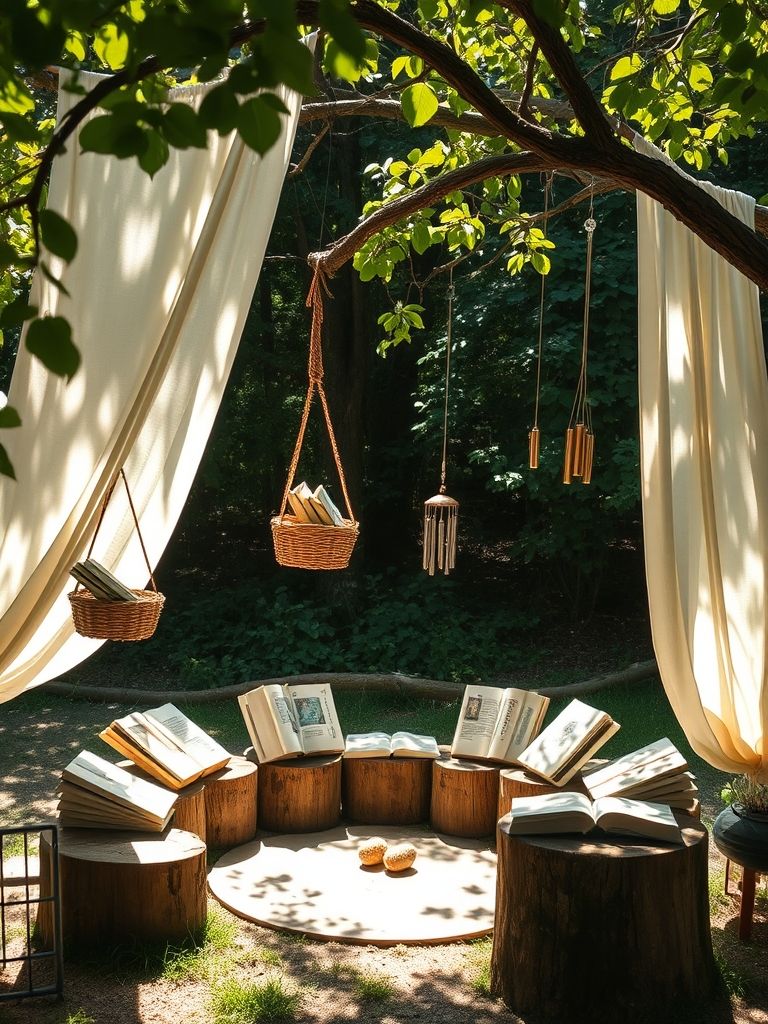
Backyard Camping Area With Mini Tents and Fairy Lights
Two or three pint-size tents clustered on a deck or pea-gravel pad create instant adventure. Twinkling fairy lights and a faux campfire (LED lanterns with tissue “flames”) complete the vibe. Role-play blooms here—kids “check in,” assign campsite jobs, and plan hikes. It’s a gentle way to practice independence in a supervised setting.
Add sleeping pads, soft blankets, and a basket of nature field guides. A clip-on constellation card turns bedtime stories into star maps. Introduce simple camp tasks: rolling up sleeping bags, packing backpacks, and tidying a shared space. These micro-routines build executive function.
If you have trees, hang a flag line with clothespins for “camp laundry.” A chalkboard easel becomes the ranger station with daily notices. Stake tents securely and use battery lights only. Keep the area visible from the house and set clear rules about zippers, pegs, and shared materials.
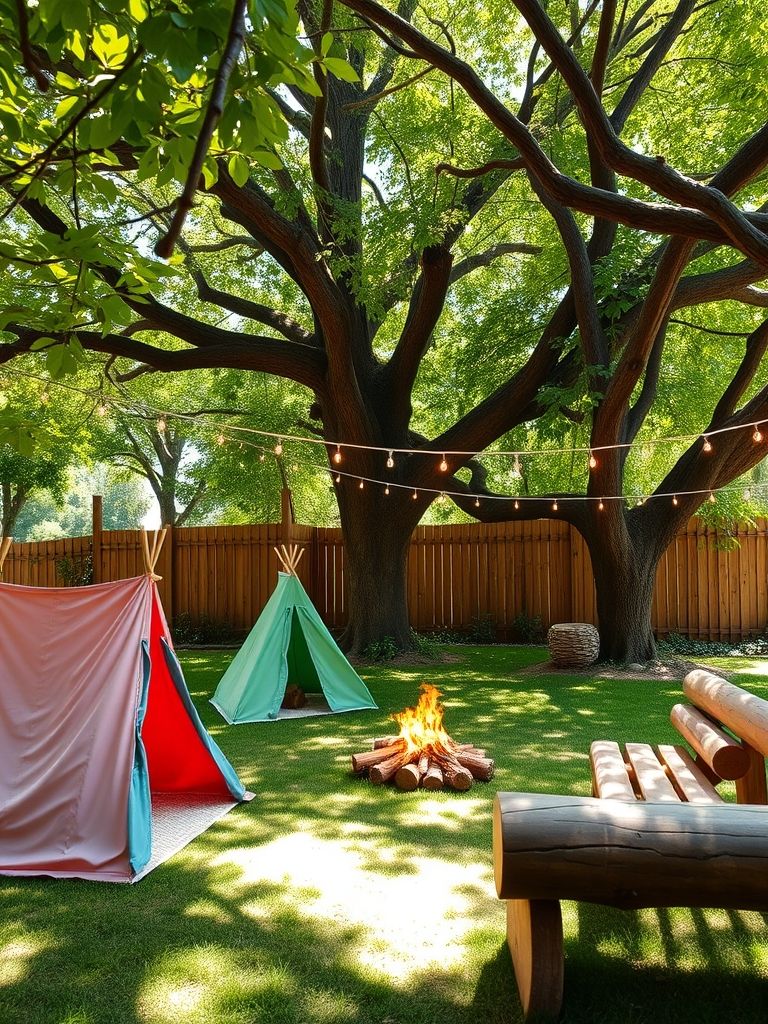
Backyard Sensory Garden With Colorful Paths and Textures
A looping path invites bare-foot exploration across smooth pavers, warm wood, cool pebbles, and soft turf. Painted stepping stones add color coding for games and pattern play. Planting pockets layer height, scent, and touch: lamb’s ear, lavender, mint, ornamental grasses, and sunflowers. Wind spinners and ribbons add gentle motion.
A low “touch table” holds pinecones, shells, seed pods, and magnifiers. Kids sort, count, and narrate what they notice—early science in action. Water features can be simple: a bubbling pot, a birdbath, or a drip jug feeding a rivulet. The sound calms and masks neighborhood noise.
Create rest nooks with a bench and shade sail so kids can regulate between active and quiet play. Consider a “feelings rock” where they pause and choose a color to match their mood. Label plants with picture tags for pre-readers. Avoid toxic species and use non-slip surfaces; keep gravel contained with edging to reduce tripping.
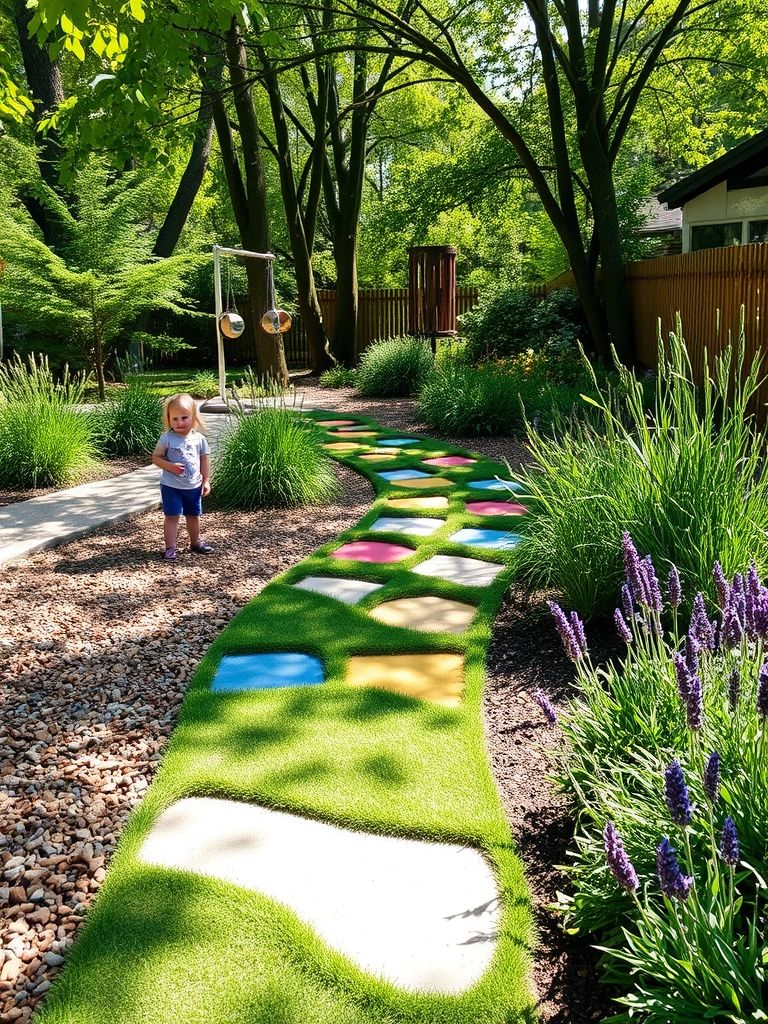
Bicycle Track Maze With Painted Arrows and Ramps
Paint a network of arrows, stop lines, and lane stripes onto a smooth patio or asphalt strip. Cones, chalk roundabouts, and foam bumpers turn it into a living traffic lesson. Kids practice balance bikes, scooters, and trikes while learning right-of-way and signaling. It’s PE class plus road-safety training.
Introduce gentle “ramps” using sturdy plywood over rubber blocks and a gradual slope. A single low seesaw bridge adds thrill without big risk. Rotate challenges weekly: “No-feet zone,” “slow race,” or “delivery run” with baskets. Missions keep returning riders engaged.
Set up a pit stop with a pump, reflective vests, and pretend driver’s licenses. Kids love stamping a “mileage card” after each lap. Ensure helmets are non-negotiable. Keep ramp heights modest, inspect surfaces for grit, and keep routes clear of play traffic from other zones.
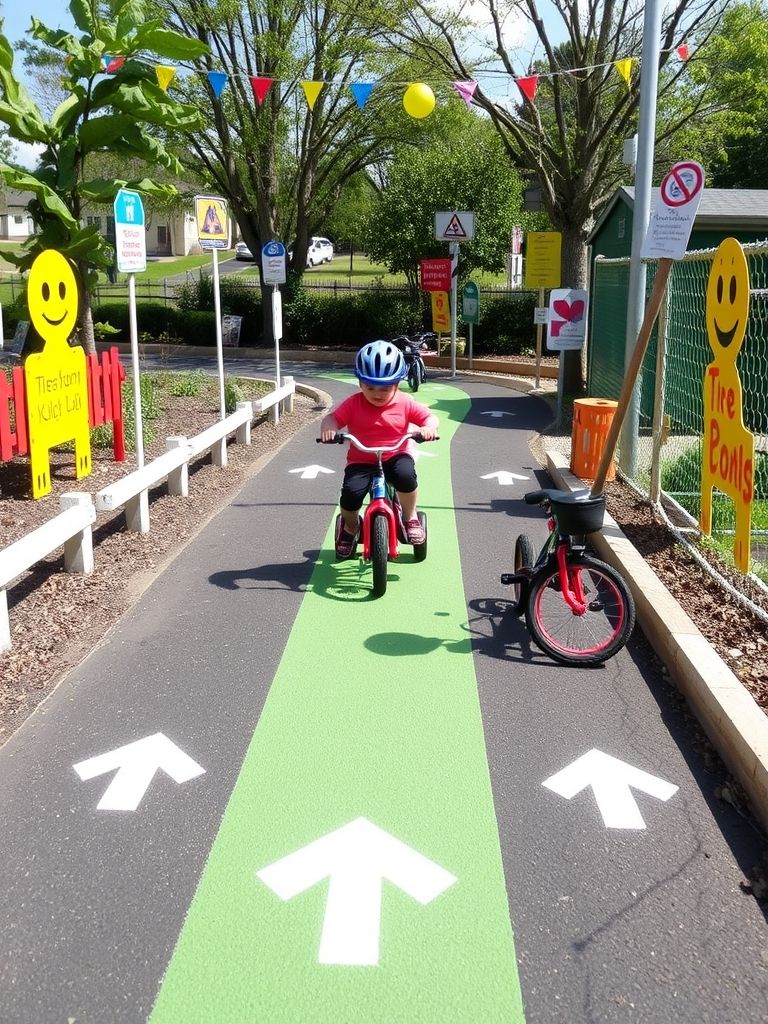
Climbing Dome and Hammock Hideout Combo
A classic metal climbing dome anchors the movement zone. Tucked nearby, a fabric hammock strung between posts or a frame offers a calm counterpoint. Kids scale, hang, swing, and invent group challenges on the dome. The hammock becomes a post-play chill spot or secret reading nook.
Lay a thick mulch or rubber surface beneath the dome for safer landings. Mark a clear perimeter so running kids don’t crash into climbers. Drape the dome with a tarp on hot days to create shade forts. Clip-on holds or rope ladders vary the routes to keep interest high.
The hammock teaches vestibular regulation—gentle rocking can reset overwhelmed nervous systems. Add a pocket caddy for books and a water bottle. Check all connections regularly, especially hammock carabiners and dome bolts. Set a “one at a time” rule for the hammock to prevent pile-ons.
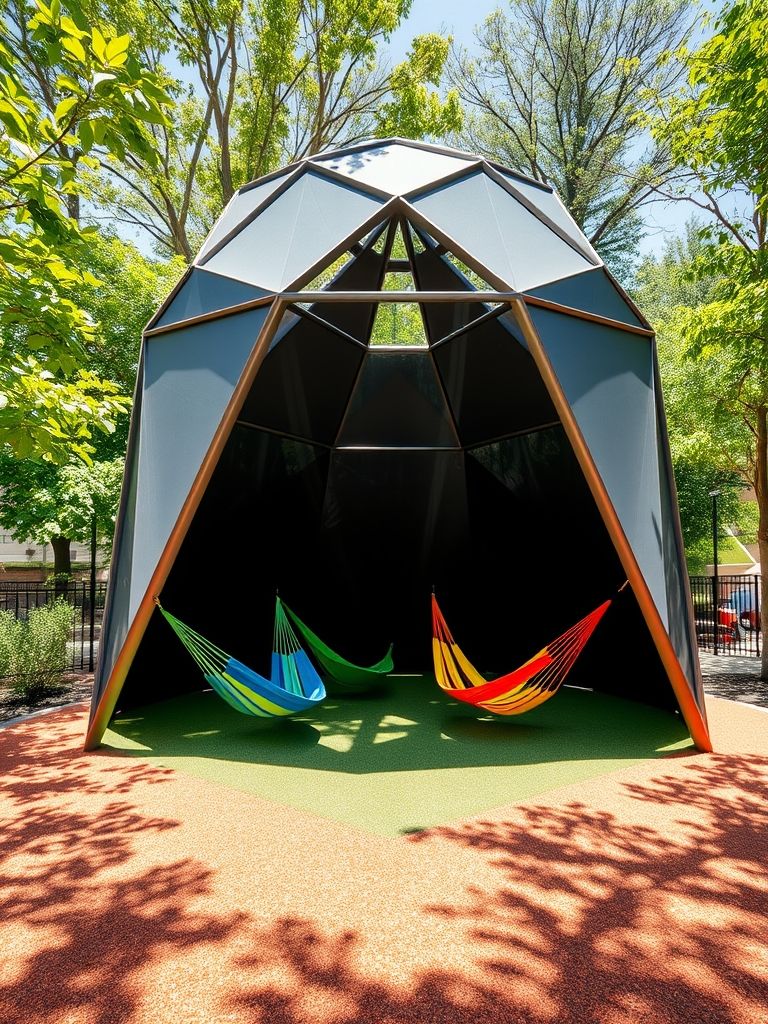
DIY Mud Kitchen With Wooden Counters and Pots
Palettes or treated timber become counters; a thrifted sink bowl drops into a cutout for instant realism. Hooks hold ladles, muffin tins, and measuring cups. Kids mix soil, water, leaves, and petals into elaborate recipes. This kind of messy, open-ended play builds fine motor skills and rich language.
Create a “pantry” shelf with labeled jars: sand, pebbles, bark chips, and safe herbs. Old spice shakers add drama without real heat. Plumb a water source with a jerry can and spigot, or park the kitchen beside a hose on a low-pressure setting. A slatted base drains easily after play.
Paint plywood menu boards for daily specials. Invite math by pricing items with pebbles and “making change” with sticks. Seal wood, round edges, and keep nails flush. Establish hand-washing and tool-rinsing routines; store aprons and towels in a weatherproof bin.
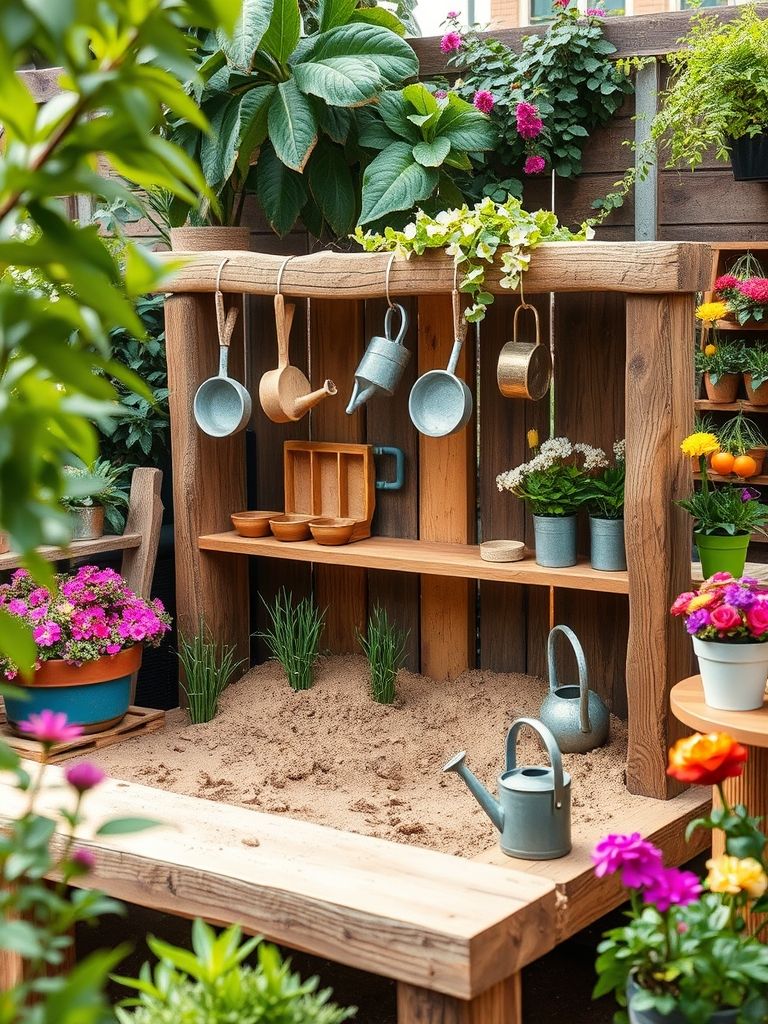
Eco Play Zone With Recycled Tire Garden and Bottle Fence
Stack and half-bury tires as planters, painting them in bright, unified colors. A translucent bottle fence refracts sunlight into jewel tones. Kids help fill planters with soil, choose seedlings, and monitor growth. Responsibility grows alongside the plants.
Tires become hop-scotch pods, balance challenges, and mini seats. Embed numbers or letters on each tire for quick learning games. The bottle fence is a conversation starter about reuse and waste streams. Sort by size or color to create patterns and math moments.
Add a “repair shop” corner with toy tools to maintain the zone—tightening caps, repainting scuffs, and sweeping soil. Stewardship is baked in. Drill drainage holes in tires, avoid standing water (mosquitoes), and choose food-safe paints. Anchor the bottle posts securely to handle enthusiastic hands.
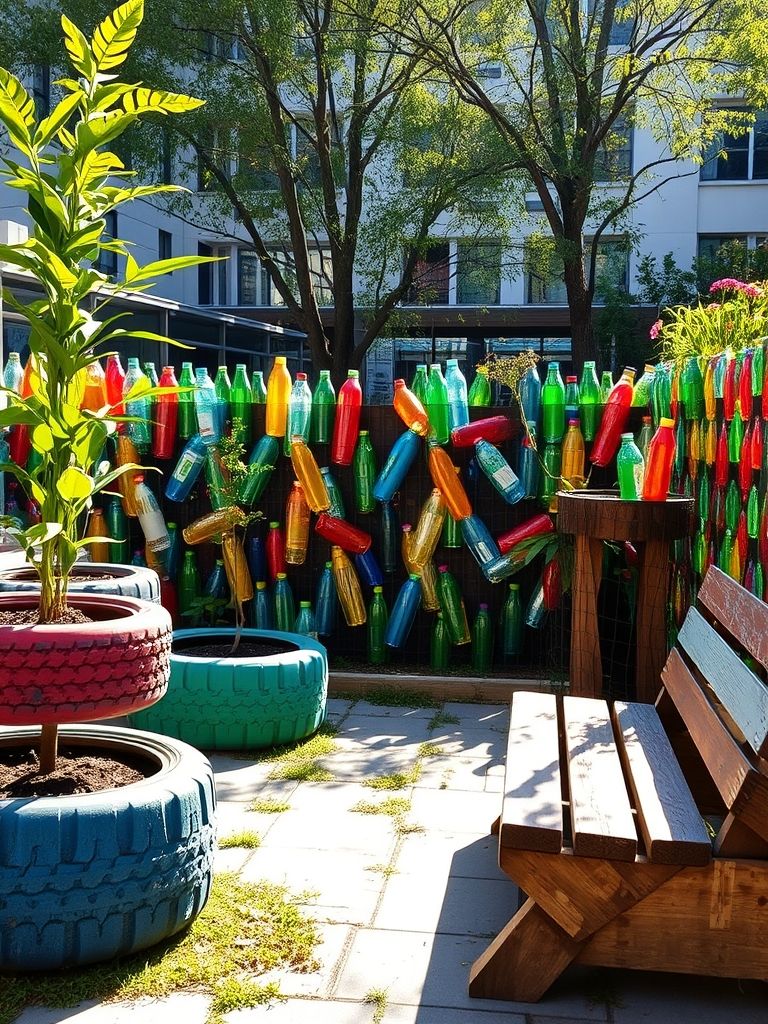
Giant Outdoor Musical Instruments Zone
Mount PVC chimes, xylophones made from tuned aluminum bars, and oversized drum barrels on a sturdy frame. Mallet holders keep sticks from wandering. Children experiment with rhythm, volume, and call-and-response. It’s a welcoming stage for kids who communicate best through sound and movement.
Arrange instruments from low to high pitch in a gentle arc. Ground markings show where to stand for duets, trios, and turn-taking. Add a conductor’s podium with simple cue cards: loud/soft, fast/slow, start/stop. Leadership roles rotate so everyone gets a turn.
Incorporate materials with contrasting timbres: wood blocks, metal triangles, rubber-topped drums. Variety invites longer attention. Use weather-resistant hardware, rounded edges, and soft-tip mallets to reduce noise spikes. Post “listening ears” rules for nearby quieter zones.
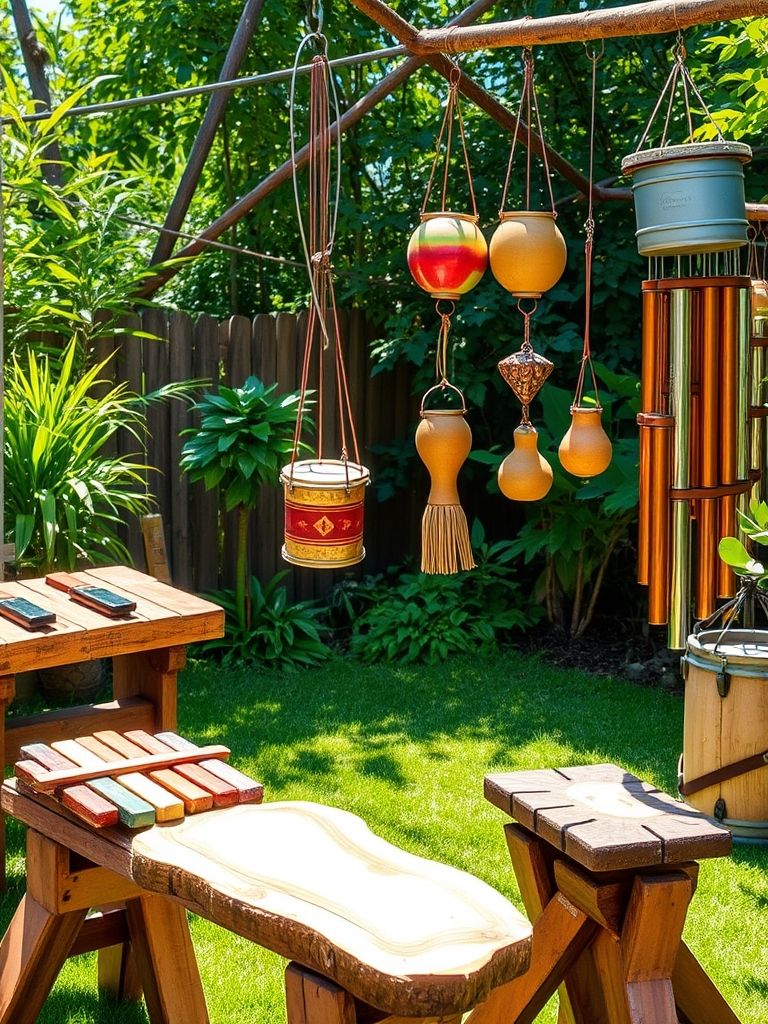
Mini Adventure Park With Zipline and Rope Bridge
A short, low-height zipline with a disc seat skims over mulch to a soft stop. Nearby, a hand-roped balance bridge links two sturdy platforms. The setup delivers just-right risk: exciting, but controlled. Kids learn to assess distance, grip, timing, and take turns.
Add a “guide station” where one child checks harness clips and calls “clear.” Cooperative roles transform thrills into teamwork. The rope bridge trains core stability and problem solving—kids invent rules like “only step on knots” or “no hands.” Variation keeps challenge alive.
Include an observation bench for caregivers with a clear sightline. Cheerleading from the sidelines builds courage in hesitant kids. Anchor posts deep, follow manufacturer clearances, and cap all bolts. Keep zipline heights conservative for young riders and inspect lines regularly.
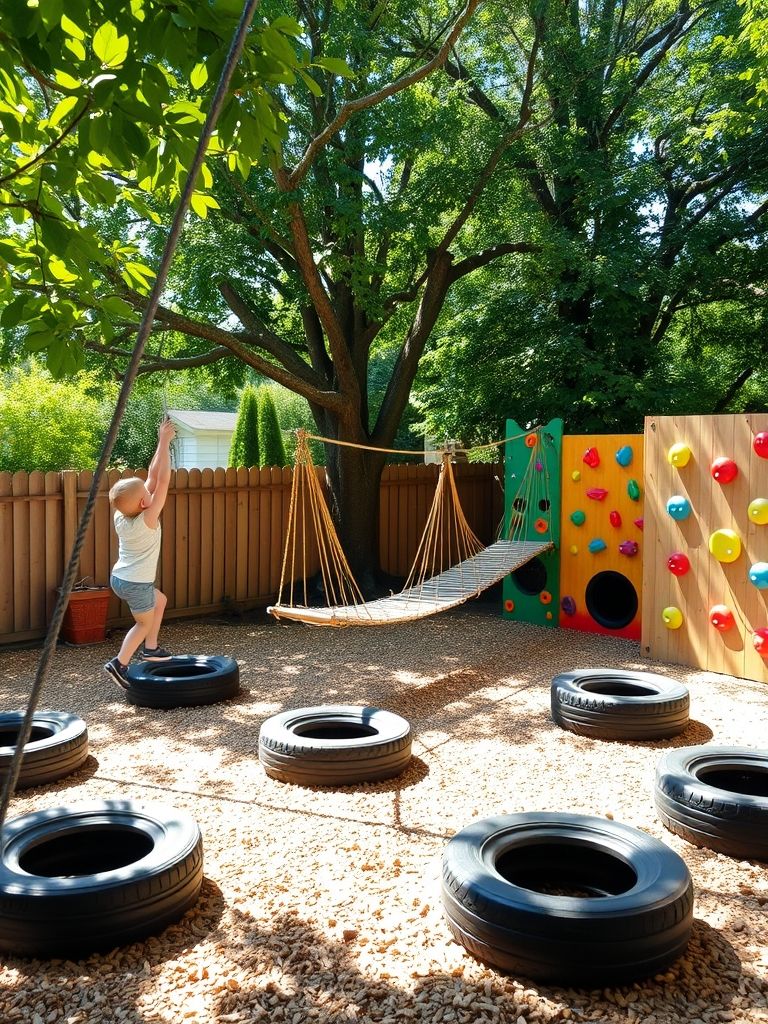
Mini Garden Plots With Painted Planter Boxes
Low raised beds painted in cheerful stripes become kid plots—one per child or per theme (pizza garden, pollinator patch). Name plaques add ownership. Children plan, sow, water, and harvest, tracking growth in a simple log. Patience, responsibility, and science come bundled with the first sprout.
A nearby potting bench hosts soil scoops, gloves, and a watering can station. Visual cues (picture charts) help pre-readers follow steps. Rotate crops through the seasons: radishes for quick wins, cherry tomatoes for snacking, marigolds for color and pest deterrence. Success builds momentum.
Invite taste tests and garden-to-table moments—herb butter on crackers, cucumber slices, or mint water. The yard becomes a classroom lunchroom. Use untreated wood or food-safe planters, fill with quality soil, and add mesh covers if local wildlife visits. Keep a path of mulch or pavers to reduce muddy feet indoors.
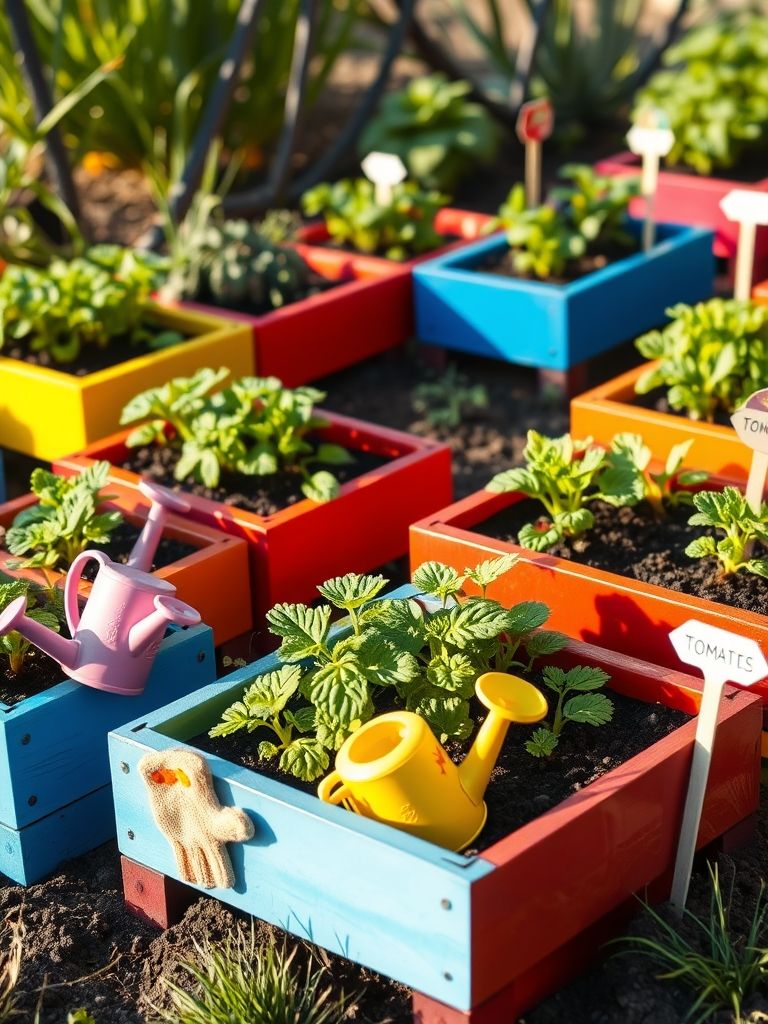
Nature-Inspired Outdoor Playhouse With Living Roof
A compact timber playhouse gets a magical upgrade with a shallow, planted roof of sedum, thyme, and low grasses. The living layer cools the structure and blends it into the landscape.
Inside, open shelving holds nature kits—binoculars, field notebooks, and bug viewers—so the house doubles as a tiny ranger station.
A Dutch door and round porthole windows invite dramatic play, mail delivery games, and quiet retreat. Kids naturally set “house rules” and practice cooperation. Add a rain chain from the gutter into a barrel to show how roofs catch and route water. Label it with simple diagrams for a curbside science lesson.
Use a chalk sign for daily roles: botanist, builder, librarian. Rotating roles make kids feel needed and keep clutter under control. Build with weatherproof materials, reinforce the roof to handle soil weight, and keep plant selections non-toxic. Annual checks keep everything solid and safe.
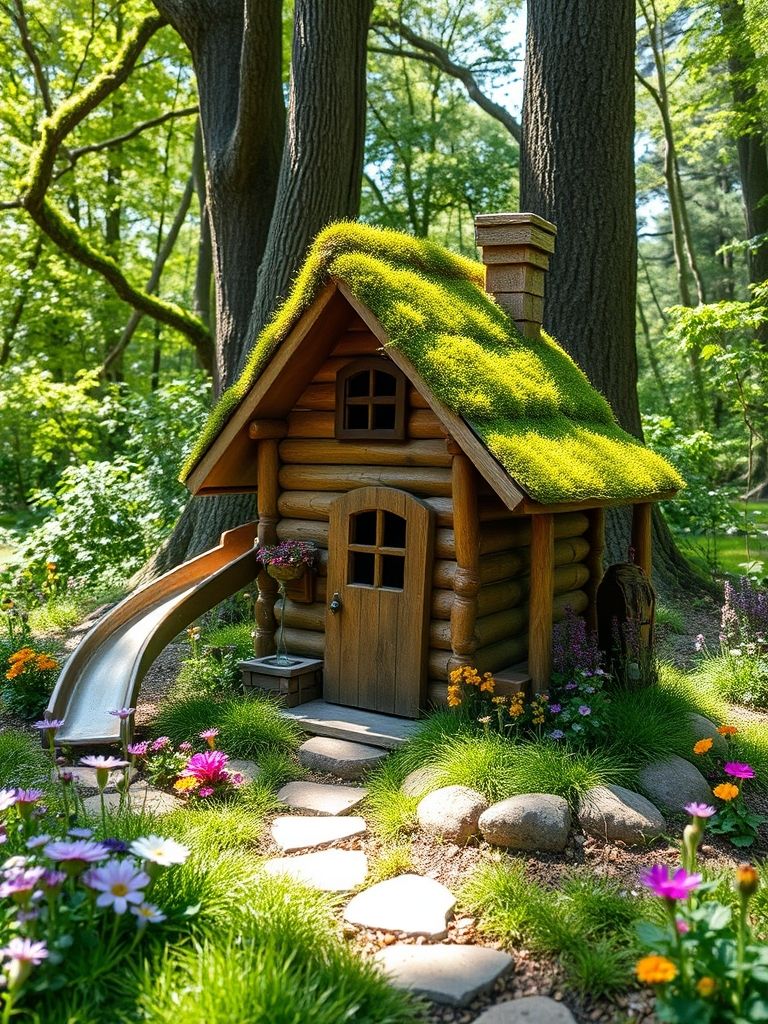
Obstacle Course Made From Natural Materials
Log balances, stump steps, rope pulls, and a crawl tunnel of willow branches create a course that looks like it grew there. The textures challenge minds and bodies. Kids invent rules—only step on circles, crab-walk the rope, or carry a pinecone baton—so the course evolves with their ideas.
Vary spacing and heights to offer “easy” and “hard” lanes. Choice is key to just-right risk and confident attempts. A start arch with a bell and a finish flag make runs feel official. Use a whiteboard to time laps, chart progress, and celebrate personal bests.
Swap elements seasonally: leaf piles in autumn, splash trays in summer, fabric streamers in spring winds. Novelty extends engagement. Sink posts deep, sand edges smooth, and keep mulch thick under higher steps. Clear sightlines let adults coach without crowding.
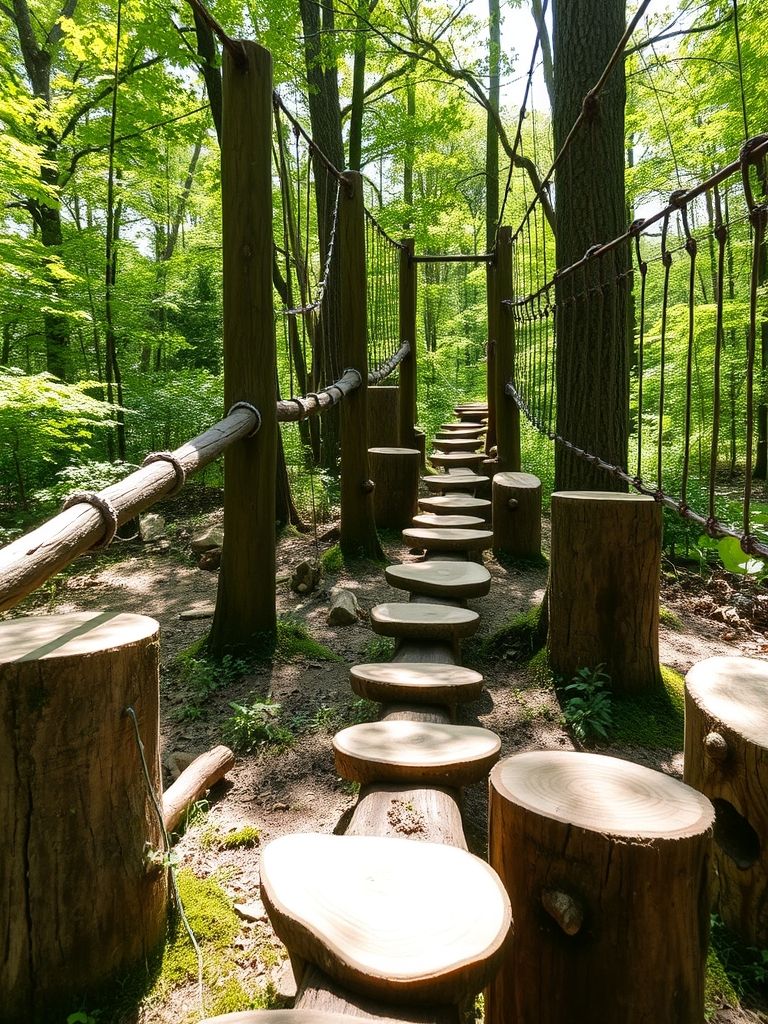
Outdoor Lego Wall With Waterproof Bricks and Bench
A marine-plywood panel faced with base plates becomes a vertical building canvas under a shade sail. A low bench stores bins of large, weather-safe bricks. Vertical play builds shoulder strength and fine-motor control while freeing the ground for other activities nearby.
Create “challenge cards” in laminated sleeves: build a bridge three studs wide, copy this color pattern, or make a letter A. Gentle prompts spark ideas. Add a “gallery rail” where finished builds perch for photos before they’re dismantled. Kids love curating their own exhibitions.
Mix in wheels, windows, and hinge elements to encourage moving parts. Suddenly you’ll see gates, drawbridges, and tiny robots. Seal edges, avoid small pieces for very young builders, and sweep the bench area regularly so bricks don’t migrate into the mower zone.
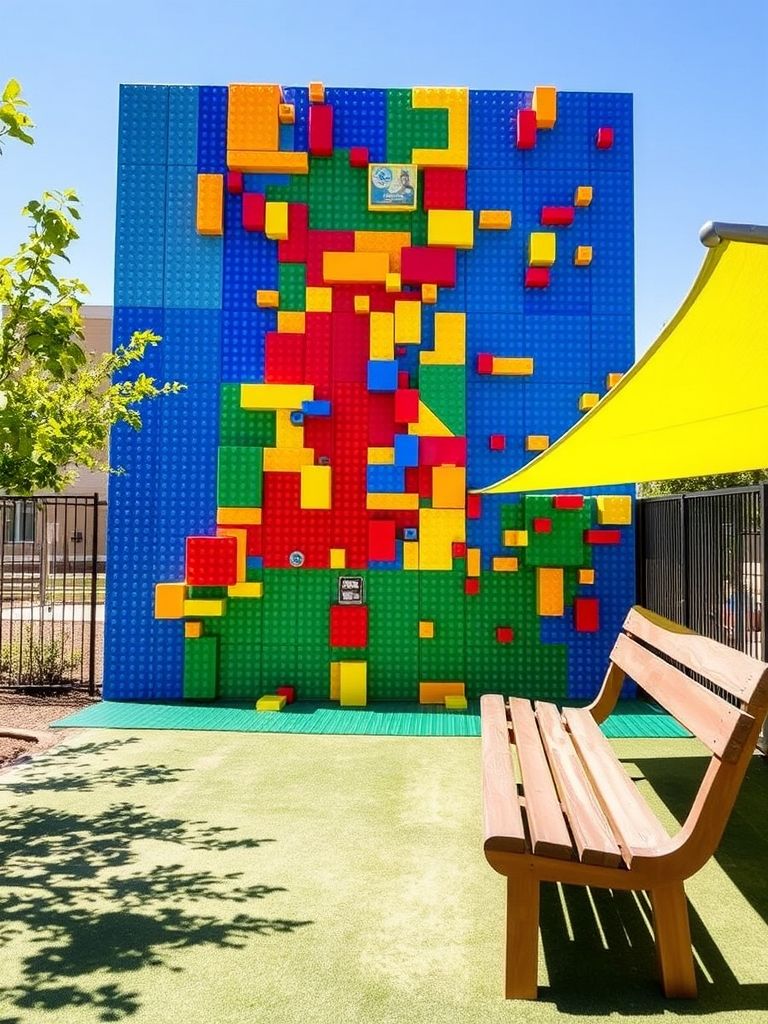
Outdoor Puppet Theater With Stage and Curtains
A small proscenium frame with weather-friendly curtains sets the scene for stories and social learning. A chalkboard marquee names each show. Behind the curtain, a narrow shelf holds sock puppets, rod puppets, and paper-bag characters sorted by theme. Organization invites longer play.
Children practice scripts, voice projection, and empathy by acting out everyday conflicts with happy endings. It’s rehearsal for real life. Add a “tech booth” with cue cards for sound effects—rain shaker, slide whistle, drum hit. Co-creators feel just as important as performers.
Seating can be simple: stump stools, picnic mats, or a few folding chairs. A ticket basket and play money make the experience official. Anchor the frame well, hem curtains above ground level to avoid puddles, and store puppets in ventilated bins to prevent mustiness.
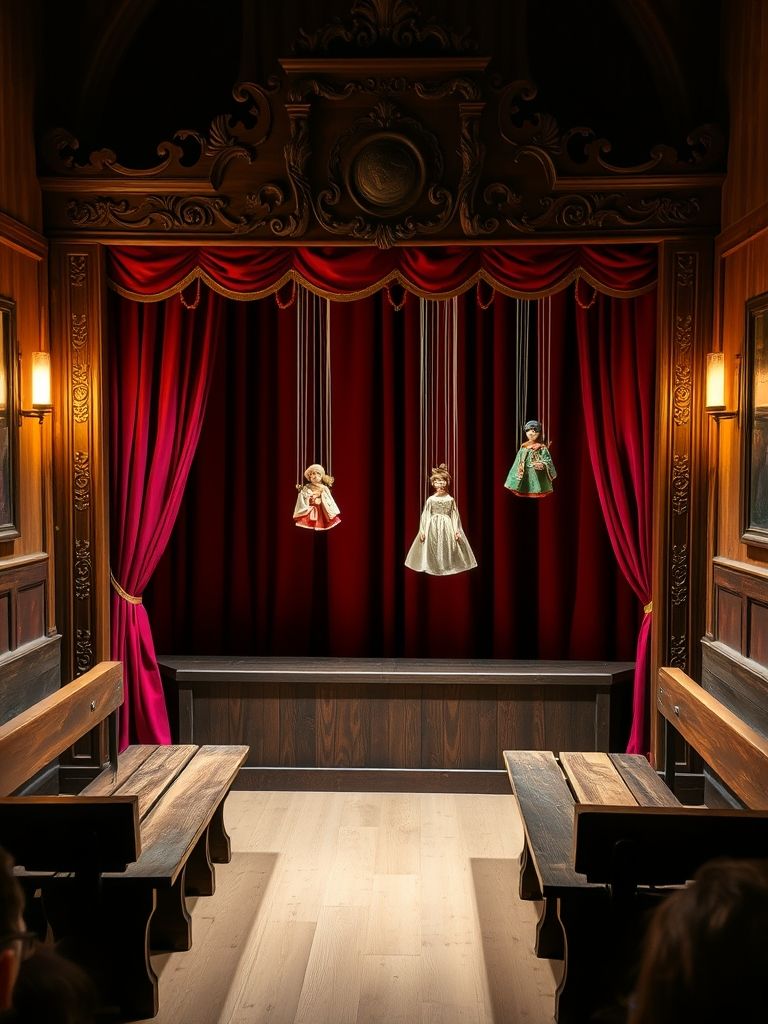
Outdoor STEM Station With Water Table and Gears
A sturdy, waist-height table with interchangeable trays supports water runs, gears, and funnel towers. Clear tubes show cause-and-effect in motion. Kids test hypotheses: “If I tilt this ramp more, will the boat go faster?” Quick, tactile experiments build real science thinking.
Provide measuring cups, droppers, rubber stoppers, and wheels that mesh. Gear racks mounted on a pegboard let kids customize layouts. Add a “challenge deck”: move 1 liter in 1 minute, design a filter to clean muddy water, or spin three gears with one crank.
A drying rack and labeled bins teach lab etiquette. The tidy-up routine becomes part of the experiment cycle. Keep water fresh, use rounded components, and set clear “no splashing faces” rules. Drain tables after use to prevent standing water.
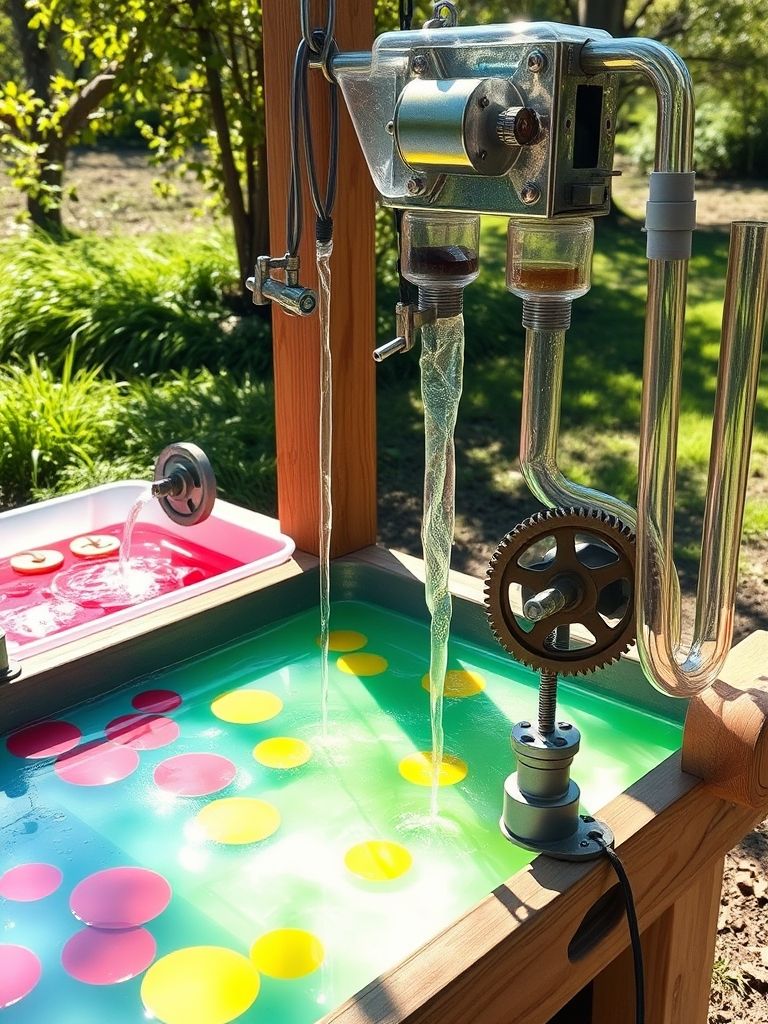
Rainbow Chalk Wall and Art Corner for Outdoor Creativity
A smooth cement panel or painted render wall becomes a mega-canvas. Buckets of jumbo chalk and sponge erasers live on a rolling cart. Color-coded sections—red to violet—invite patterning, gradients, and collaborative murals. Art becomes a shared language across ages.
Clipboards, stencils, and shape tracers support hesitant artists. Wins come quickly, which builds confidence to try freehand. Schedule “gallery days” where kids title their pieces and explain their process. Presentation skills sneak in under the fun.
Install a small handwashing station and a mat for crumbly chalk dust. Quick cleanup keeps adults enthusiastic about repeat sessions. Choose low-dust chalk, avoid abrasive scrubbing, and refresh the wall with exterior paint when scuffs accumulate. Shade prolongs chalk life.
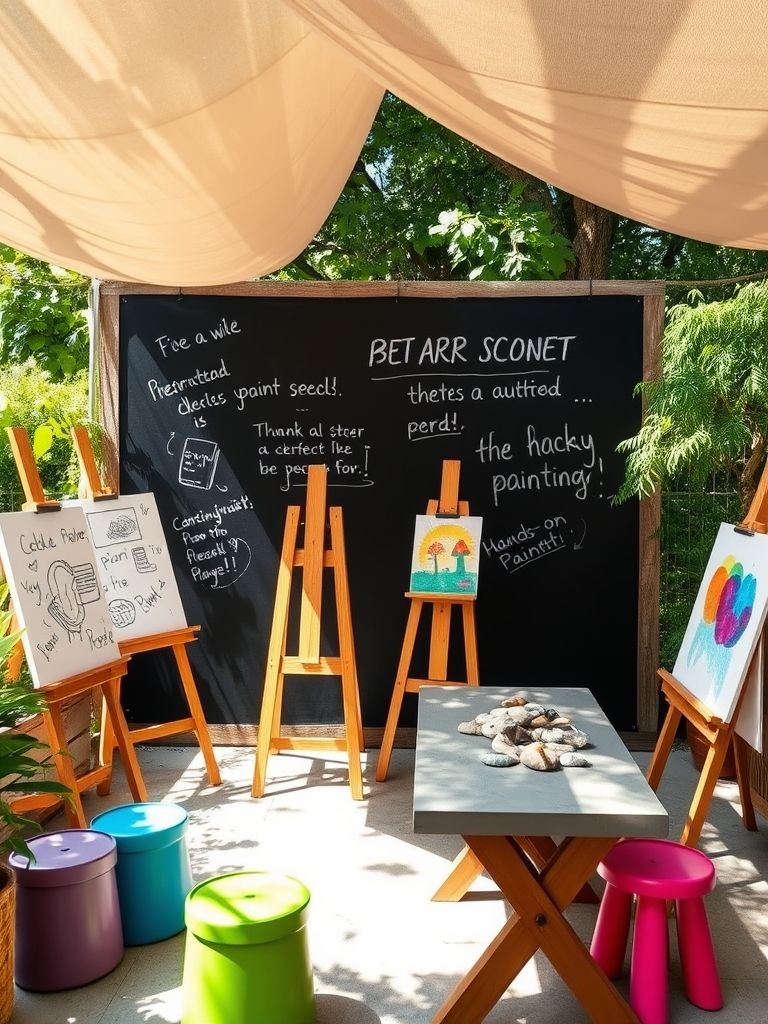
Sandbox Oasis With Wooden Canopy and Beach Toys
A deep, clean sand pit sits under a slatted wooden canopy that filters sun like palm leaves. The light and shadow feel vacation-like. Buckets, molds, and diggers are basics; add funnels, PVC chutes, and paintbrushes for carving details. Tools shape richer play.
Edge seating lets kids rest, observe, and re-enter without stepping on castles. A “no-step zone” sign protects big builds. Bury “fossils” (shells, smooth stones, dinosaur bones) for rotating digs. Discovery and narrative play fuel long sessions.
A simple sand “bakery” with trays and ring molds encourages sharing, turn-taking, and math: halves, dozens, and prices. Use play-grade sand, cover the pit when not in use, and rake weekly. Provide a brush-off station to keep indoor floors sane.
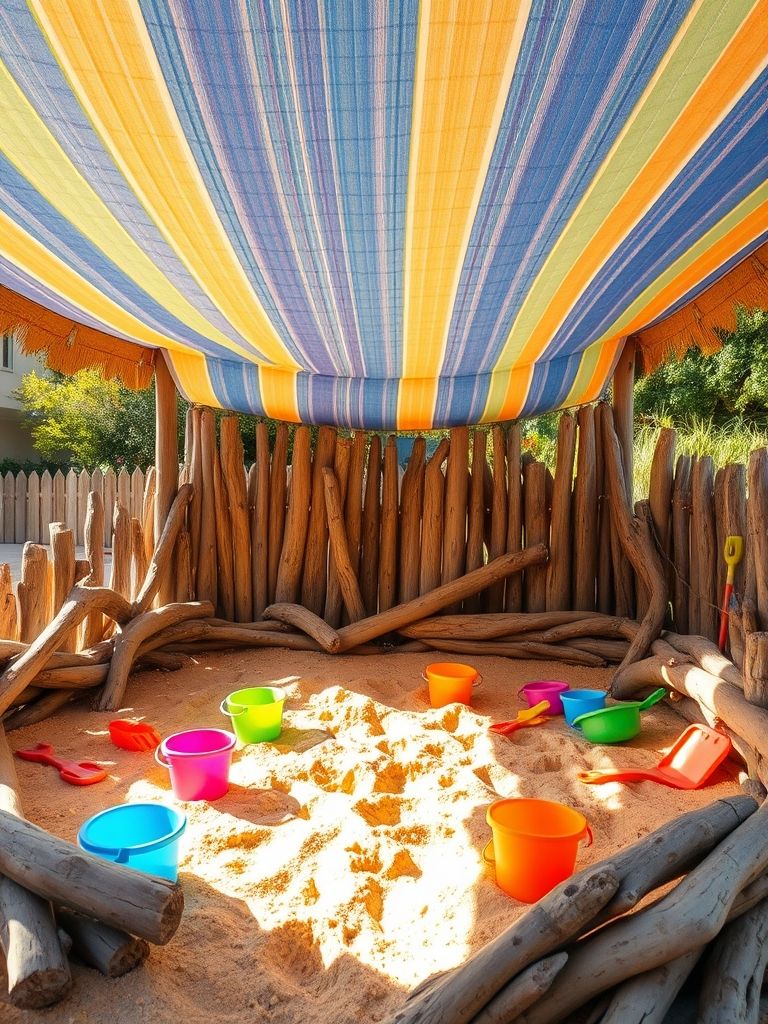
Tree Swing Corner With Painted Tires and Cushions
A classic disk swing or supported strap swing hangs from a healthy limb or a dedicated A-frame. Nearby, painted tire seats with cushions form a lounge. Kids line up naturally for turns; the lounge becomes the cheering zone and planning hub for the next trick.
Add ground targets—rings or chalk circles—for gentle “land the swing” games. Precision play tames wild arcs into skill. A swing journal lets kids log new moves and set goals. Celebrating small wins keeps the vibe positive and safe.
Painted tires double as stepping pods or mini tables for water bottles and books. The corner feels like its own club. Check limb health with a pro if using a tree, use rated hardware, and keep fall zones clear and soft. One rider at a time is the golden rule.
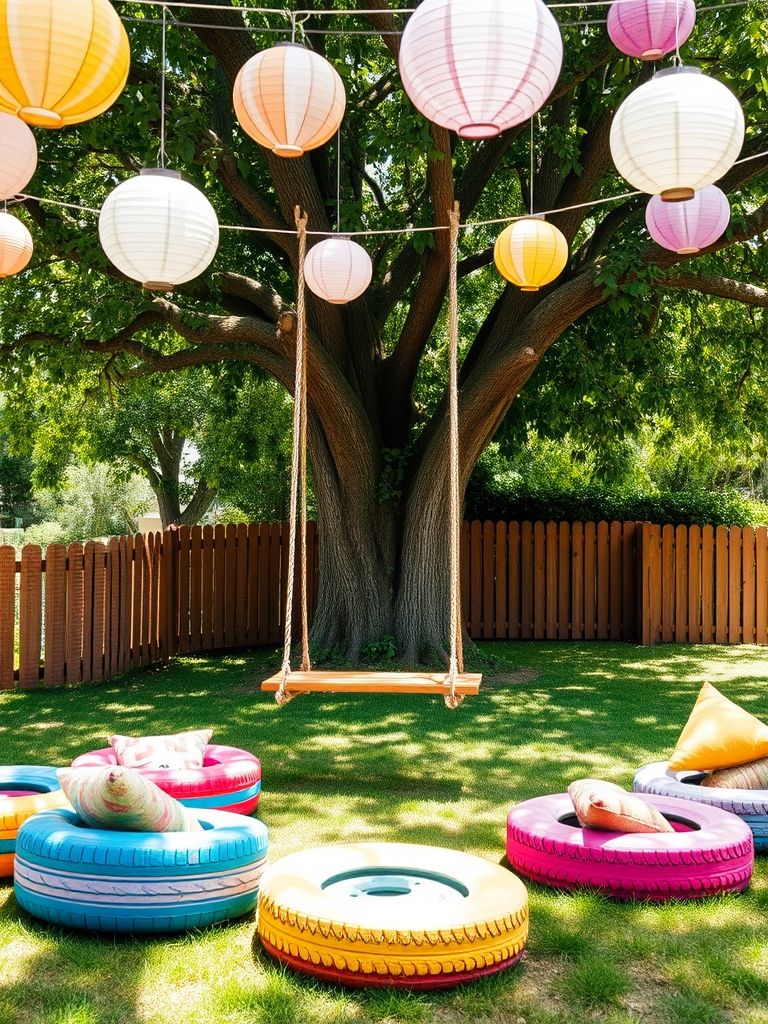
Water Play Area With Splash Pads and Sprinkler Rings
Interlocking foam tiles or textured pavers define a slip-smart splash zone. Low-profile sprinkler rings and gentle spray heads keep it friendly for all ages. Add water trays, boats, and measuring jugs to stretch beyond “run through.” Structured options extend attention and learning.
Create circuits: move from spray ring to pouring station to sponge relay. Sequencing builds stamina and self-management. A portable shade sail and towel hooks signal comfort and order. Kids know where to stage, dry, and return tools.
Freeze colored ice blocks for hot days and let kids race melts down a gutter track. It’s science wrapped in squeals. Use non-slip surfaces, test water temperature, and set a “walk only” rule. Drain or cover fixtures after play to deter critters.
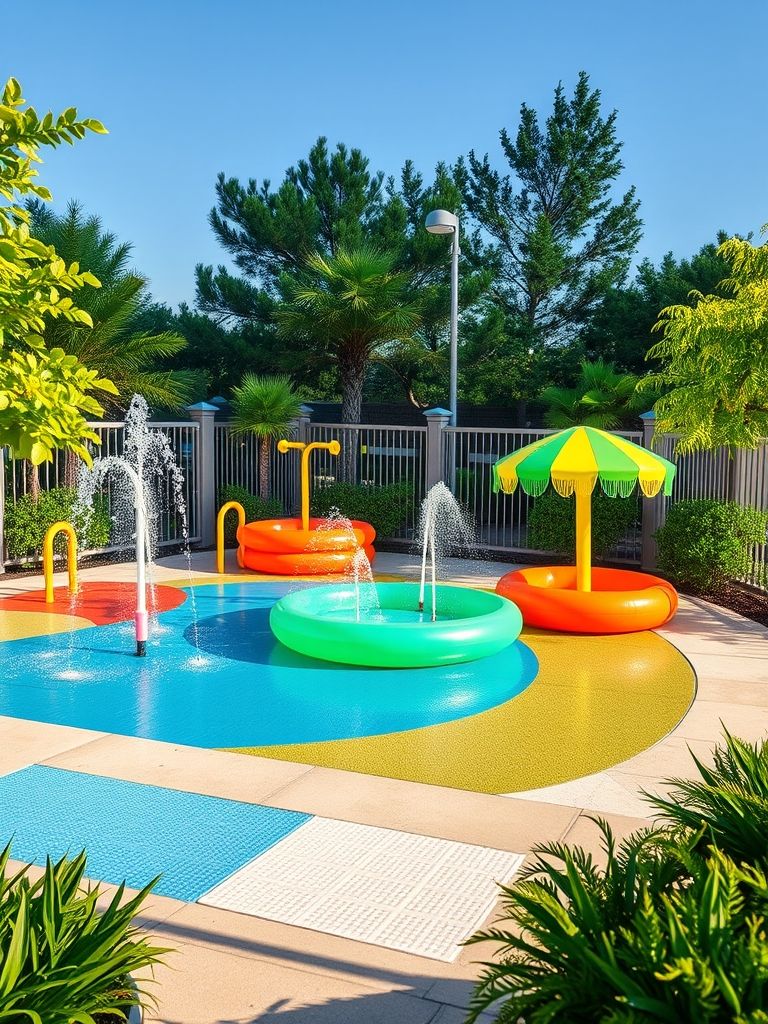
Whimsical Fairy Garden With Mini Doors and Lights
At the base of shrubs, tiny doors, mailboxes, and pebble paths appear like magic. Solar twinkle lights turn dusk into a storybook. Kids write notes to fairies, trade found treasures, and care for miniature plants like thyme, moss, and baby ferns.
A crafting caddy supports upgrades: twig fences, acorn caps, and leaf bunting. Ownership makes the magic feel earned. Post “fairy notices” with tasks—clean the path, water the mushrooms, find three heart-shaped leaves. Purpose fuels gentle stewardship.
Rotate surprises: a tiny ladder one week, a new mailbox flag the next. Small reveals keep curiosity alive. Avoid choking hazards for younger visitors and choose weather-safe materials. Tuck elements where mowers and feet won’t accidentally erase the wonder.
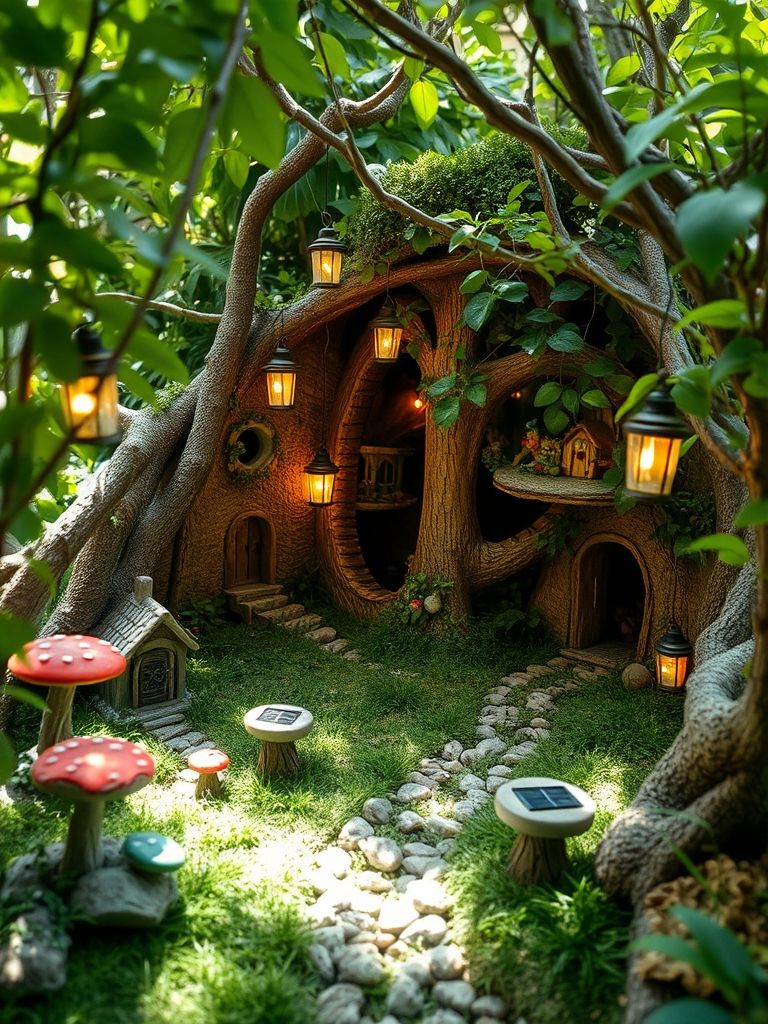
Conclusion: Build a Yard That Grows With Your Kids
A great play yard is a living system—part classroom, part gym, part art studio—shaped by your space, your climate, and your children’s emerging interests. When you mix active zones with calm corners, kids learn how to rev up and how to self-regulate.
Start small. Choose two or three zones that fit your budget and time, then add seasonal swaps to keep things fresh. With a few well-placed signs, simple routines, and regular safety checks, your backyard becomes the place where curiosity, confidence, and community take root.

